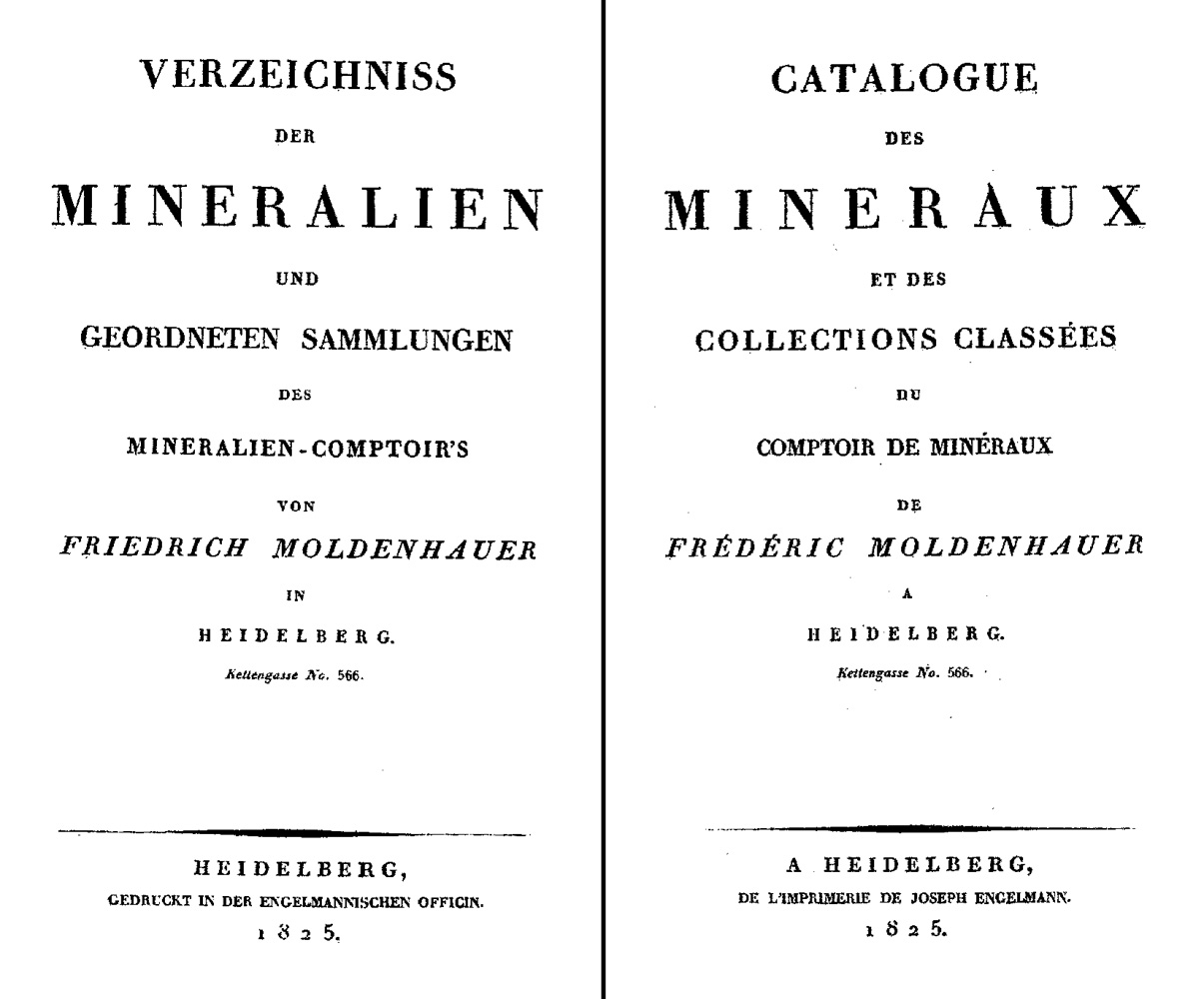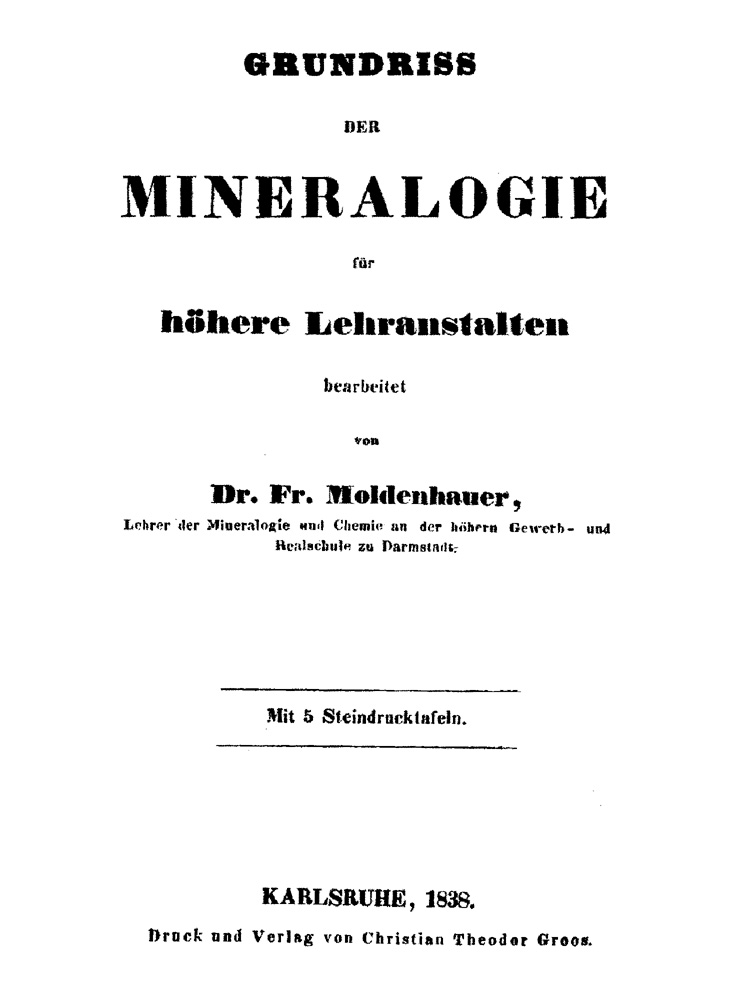MOLDENHAUER, Karl Friedrich August.
(1797 – 1866)
Moldenhauer was a professor of chemistry and mineralogy at the Realschule in 1835 and at the higher Gewerbschule in 1836 both at Darmstadt. Earlier in 1824 he owned a mineral supply business in Heidelberg. Contributed to practical chemical fabrication.
Biographical references: DBA: I 854, 2-4; II 906, 168, 173-177. • Deutsche Apotheker Biographie Supplement I: 319-20. • Hessische Biographien. • Poggendorff: 2, col. 176. • WBI.

1. German & French, 1825.
Verzeichniss | Der | Mineralien | Und | Geordneten Sammlungen | Des | Mineralien-Comptoir's | Von | Friedrich Moldenhauer | In | Heidelberg. | Kettengasse No. 566. | [tapered rule] | Heidelberg, | Gedruckt In Der Engelmannishen Officin. | 1825.
Catalogue | Des | Mineraux | Et Des | Collections Classées | Du | Comptoir De Minéraux | De | Frédéric Moldenhauer | A | Heidelberg. | Kettengasse No. 566. | [tapered rule] | A Heidelberg, | De L'Imprimerie De Joseph Engelmann. | 1825.
8°: π2 1-28 34; 22l.; [4], [1]-40 p. Page size: 196 x 122 mm.
Contents: [2 pgs], Blank, verso title page in German.; [2 pgs], Title page in French, verso blank.; [1]-35, Text.; 35-40, "Anmerkungen. Remarques."
Very rare. This collection catalog describes specimens housed at a bank??. It consists of an alphabetical list giving short descriptions of 982 specimens. The text at the end, written in parallel columns of German and French, provides information on the storage of the collection and conditions of its sale.

2. German, 1838.
Grundriss | Der | Mineralogie | für | höhere Lehranstalten | bearbeitet | von | Dr. Fr. Moldenhauer, | Lehrer der Mineralogie und Chemie an der höhern Gewerb- und | Realschule zu Darmstadt. | [rule] | Mit 5 Steindrucktafeln. | [rule] | Karlsruhe, 1838. | Druck und Verlag von Christian Theodor Groos.
8°: π9 1-168 172; 139l.; [i]-xviii, [1]-262 p., 5 folding lithographic plates. Page size: 220 x 137 mm.
Contents: [i-ii], Title page, verso blank.; [iii]-vi, "Vorrede"-signed, "Der Verfasser," Autumn 1838.; [vii]-xviii, "Inhalt."; [1]-262, Text.; [At end], 5 folding plates.
Plates: Bound at the end of the text are five folding lithographic plates showing crystal drawings and diagrams. Each is signed by F. Groll.
Very rare. In this book, Moldenhauer presents his own mineralogical classifcation. For crystallography, he relies uponthe principals developed in Gustav Rose's Elemente der Krystallographie (Berlin, 1833). For other chemical and physical properties the author has used a composite of several authors including Blum, Beudant, Breithaupt, Hartmann, Mohs, Naumann and Walchner.
The text begins with a very short introduction which is followed by the first large section of the work that focuses on terminology (pp. 4-133). Detailed descriptions and definitions are provided of physical and chemical properties, as well as standard procedures. The short second section explains how to use the previously described terminology in mineral descriptions (pp. 134-136). While the third (pp. 137-141) and fourth (pp. 142-43) discuss systematics and nomenclature, respectively. The fifth seciton consists of the descriptive mineralogy (pp. 146-253). The classification utilized appears to be wholely the invention of Moldenhauer. The system is divided into two large groups of stones and metals. Under stones the four classes of salts, spars, precious stones and earths are considered. The spars are classified according to their hardness (based upon Mohs scale) and the earths are distinguished by their specific gravity. Metals are broken into "Glanz", pyritic metals and semimetals. An appendix (pp. 254-262) covers mineral gases, coal and petroleum products, and minerals that are not completely defined.
.